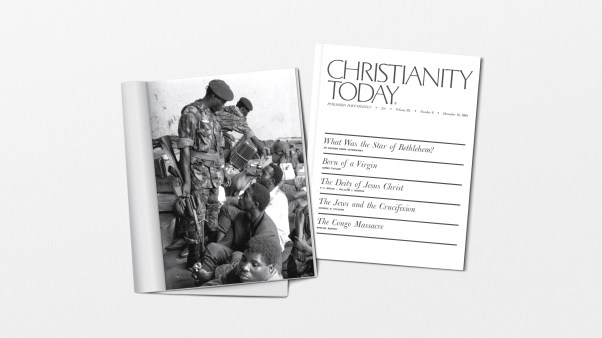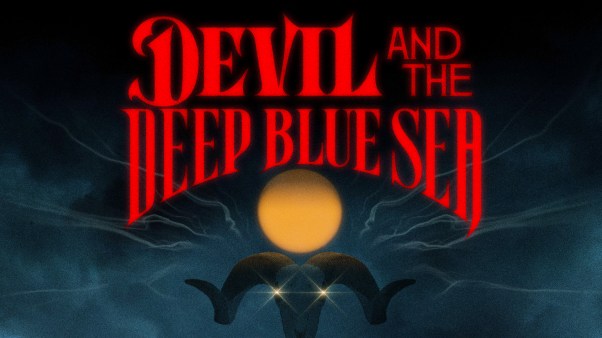"One day they will come, with crucifix in one hand and the dagger in the other, to cut your throats or to force you to accept their customs and opinions," wrote the French intellectual Diderot in 1772. "One day under their rule you will be almost as unhappy as they are."
Diderot was sounding the alarm for Tahitians unfamiliar with European colonialism before the English missionary effort in the South Pacific got underway. Could he have witnessed how Christianity actually spread throughout the islands, he might have retracted his dire prediction. While many British missionaries thought it a worthy cause to "civilize" South Pacific islanders, few if any used force. Many channeled their energy into mentoring a few converts, who in turn went out as "teachers" to make converts of their own. Over and over again, the first Christian face a Samoan, Tongan, or Rarotongan saw was not white, but brown.
Mission through mobilization
The person we have to thank most for this was the missionary John Williams (1796-1839). Sent by the London Missionary Society (LMS), Williams arrived in Tahiti in 1817 at a time when the church there was still in its infancy. In a matter of months, he achieved fluency in the language and began discussing with the chief of the island and his fellow missionaries a strategy for evangelizing the surrounding islands. In May 1818, they set up the Tahitian Missionary Society, an organization intended to incorporate converts into this evangelistic vision and encourage them not only to contribute financially but also to participate in the mission's endeavors. Williams immediately began preparing Tahitian missionaries for voyages to other islands.
His first opportunity came with the arrival of refugees escaping an epidemic on the island of Rurutu. Their leader, Auura, was astonished to find not only white people on Tahiti but also an "assembled multitude … sing[ing] the praises of the living and true God." Auura and his companions converted and, three months later, asked Williams if they might return to Rurutu to share the good news before the epidemic wiped out their people. Williams honored Auura's request and sent a few Tahitian deacons along with him on an English merchant ship.
Williams also sent with Auura a boat of his own and a Tahitian crew to bring back word of how the mission fared. "After an absence of little more than a month, we had the pleasure of seeing the boat return," Williams wrote, "laden with the trophies of victory, the gods of the heathen taken in this bloodless war, and won by the Prince of Peace." The people of Rurutu rejected their "idols" and embraced the Christian faith before a European ever stepped onto the island.
Williams tapped into this kind of indigenous missionary courage over and over again. He drew many of his first "teachers" from the Tahitian island of Raiatea, where, historian John Garrett notes, the people "had strong ocean-going canoes and were fond of long and adventurous voyages." Williams would later write, "So great are the advantages on the side of a native Teacher at the commencement of a Mission over a European … one color, almost one language, and a oneness of habit gives them these superior advantages."
Strategic choices
While elsewhere in the South Pacific missionaries encountered much more resistance, Christianity spread quickly in Polynesia. Williams sent missionaries to Samoa in 1830, for example, and seven years later, 20,000 people (half the island's population) professed Christ. Why such spectacular growth? Williams understood how much influence chiefs had in village life, and he intentionally sought to win them over in order to secure not only the respect of the community but also the admiration of other chiefs. Raiatea's chief Tamatoa impressed Makea, the chief of Rarotonga, who in turn awed Malietoa, an influential chief in Samoa.
Consequently, in Samoa at least, chiefs gave their faife'au or pastors special status, and respect for village authorities translated into respect for the village pastor. Christianity is now fully integrated into Samoan village life—what Samoans today call the fa'a Samoa. Furthermore, by approaching the chiefs as he did, Williams also promoted a measure of peace throughout the islands. Chief Malietoa in Samoa was a feared warrior when Williams met him; after embracing Christ, Malietoa was a force for peace.
Williams set the vision for the expansion of Christianity in the South Pacific, not only through his remarkable zeal for evangelizing the islanders but also through his ingenuity and resourcefulness. When the LMS board of directors was slow to provide the missionaries with a boat that would transport missionaries throughout the islands, Williams built his own from scratch and named it The Messenger of Peace. The board saw this as a slap at their authority and insisted that he ditch the ship. It is a measure of Williams's sheer determination that the board eventually came round to his point of view—in fact, after his death the LMS commissioned a long line of "mission ships" that would serve the South Pacific until 1972. It is doubtful whether the church would have grown so quickly had it not been for these ships.
Sadly, Williams did not live to see the fruit of his efforts. He was killed and presumably eaten in the New Hebrides in 1839. That same year his missionary colleague Aaron Buzacott founded Takamoa, the first theological college in the South Pacific, on the island of Rarotonga. The college at Malua in Samoa soon followed. Trained as missionaries, the graduates of these schools served on other islands, and the gospel spread rapidly. By the time the World Missionary Conference met in Edinburgh in 1910, Christianity had largely indigenized in the South Pacific. In the words of Garrett, "What emerged was Polynesian [Christianity] with British overtones rather than British Christianity in Polynesian garb." For Williams, that would translate into mission accomplished.
Copyright © 2005 by the author or Christianity Today/Christian History & Biography magazine. Click here for reprint information on Christian History & Biography.










